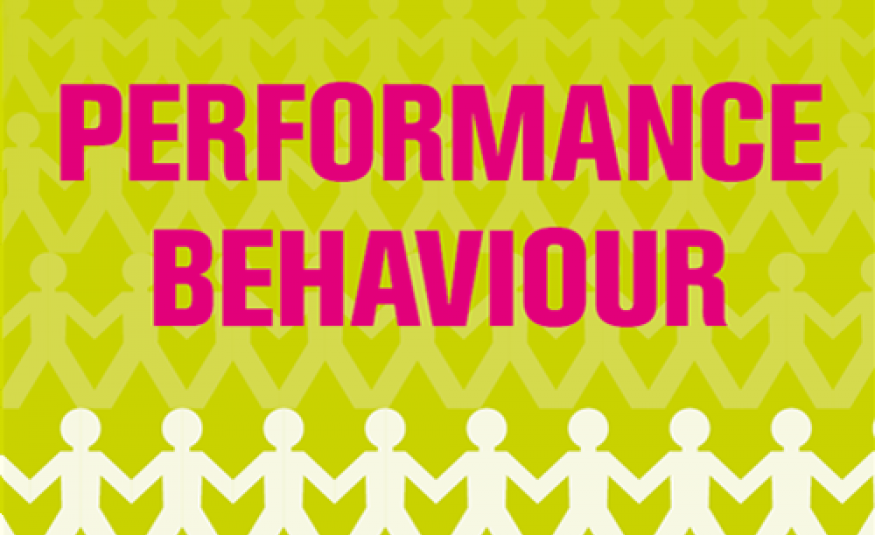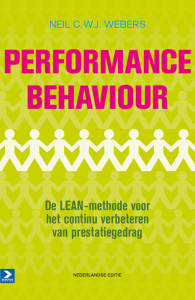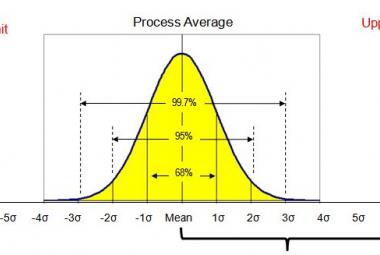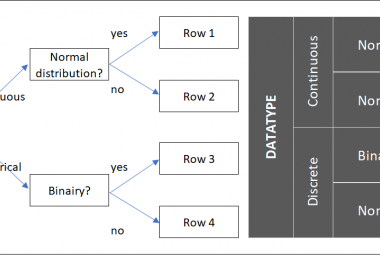In his book ‘Performance Behavior’, Webers describes how an organization can link performance to behavior. This article will focus on the eight types of People-waste which are described in this book. To minimize these wastes and optimize performance behavior, Webers gives a few tips: It should be clear for all employees what the target is (1), one should define what behavior leads to the desired performance (2) and that defined behavior should be measured and anticipated on (3).
To optimize performance behavior, Webers describes 8 FORMS OF HUMAN-WASTE which obstructs continuous improvement:
- Leadership-waste is the result from too much push-management (based on authority). In a Lean company, a manager pulls knowledge from his employees by giving direction and encouragement, but he leaves the creative part of the problem solving with his team members. The team members can then use their experience and creativity to find solutions and share them with the manager.
- Comfort-waste exists when targets aren’t stretching. In a working environment, people in general are not really motivated to improve anything unless they are asked to. Setting measurable targets helps to visualize this task and challenges the people to upgrade their performance.
- Communication-waste is the result of misunderstandings which usually find their origin in meetings. A clear breakdown of KPI to set targets (Hoshin Kanri) and the use of Communication cells will structure meetings and therefore reduce this type of waste.
- Discipline-waste exists when people are not held accountable for the made agreements, which could range from showing up at the meeting on time or following a ‘Standard Operating Procedure’. A way to minimize this waste is to implement Kamishibai, a mini-audit system, in which every standard can be continuously checked and challenged.
- Goal-waste originates when employees have no idea of what is expected of them. A clear link between company KPI und Team KPI (Or Behavioral Indicators [BI]) should be made (Again, Hoshin Kanri).
- Engagement-waste is the result of asking people to take responsibility for events or results which they cannot influence themselves.
- Solving-waste is the waste of capacity to solve problems when people work on solving problems without focusing on the root-cause of a problem. When the root-cause is not addressed in the problem solving process, the problem will possibly reoccur in the future and require capacity for a second time. A tool to use to prevent this type of waste is the POOS-PDCA, which will later be described.
- Tuning-waste is the waste where people talk about different problems or solutions and comes from the mismatch between Performance, performance management and improvement activities. this waste can also be reduced by using Communication Cells.
A STRETCHING TARGET is a target which challenges the employee to increase his performance without reducing comfort level, (= minimizing Comfort-waste = preventing Muri). This means the target should not be too difficult to achieve (which would lead to panic) and not too easy (which would lead to boredom). According to Webers, a challenging target should be met 50% of the time so the employee knows he can reach the target. This will result in the employee striving to increase the success rate. When the target is reached almost every time, the employees are not challenged to improve anymore, since they meet their goals. The target should than be increased.
But what do we target? Webers describes three levels of targets: Monitoring level (1), Steering level (2) and on Behavioral level. The BEHAVIORAL INDICATORS (BI) are the solution to the question which tasks an employee should complete to control processes. Because an employee can influence his own behavior, engagement waste can be minimized by using this kind of indicators. Behavioral indicators should be defined on a short interval as possible, for instance hourly. The advantage for short interval indicators is that employees have the chance to respond to a deviation within their own shift, rather than the problem showing up only at the end of his shift when daily indicators are uses when it is too late to respond.
Once one has BI, it is also important that employees get proper und timely feedback from management when problems occur. It is therefore important to design a STEERING AND RESPONSIBILLITY STRUCTURE in which BI are clearly linked to Performance Indicators (PI) and eventually to Key Performance Indicators (KPI). A fixed moment to discuss performance of fixed BI reduces Tuning waste because everyone gets timely feedback on a structured basis. The direct link from BI’s to KPI’s on management level facilitate an escalation model in which problems can be solved as soon as they arise.
To preventatively solve a problem, and thereby reducing solving waste, Webers describes the PCSS-PDCA LOOP. This loop is an extension of the well-known PDCA loop where a structure for improvement of performance behavior is added to the Plan Do Check Act cycle. PCSS PDCA is short for the following sequence of steps:
- Performance deviation, when one notices a deviation from standard
- Cause analysis, where a 5x Why or a Ishikawa diagram is used to determine the root cause(s) of a problem
- Different Solutions from the analysis should be evaluated
- A Specific improvement goal should be defined which should clearly mention which solution is chosen to deal with the deviation of the standard, or the BI.
- A Plan is made, which can include a short term corrective action, but must always have a Preventative action, to prevent the deviation from occurring in the future.
- Do, execute actions defined in plan.
- Check is the actions have the predicted influence on the BI.
- Act, change Standard Operation procedures when successful, change plan or redo root-cause analysis when not successful.
The strength of the PCSS PDCA is the fact the PDCA cycle is directly linked to the BI on the shop-floor. Since all BI are linked to company KPI, each improvement action based on this cycle will directly improve business performance.
Organizational changes lead to resistance from employees. For dealing with this resistance, Webers describes 6 SUCCES FACTORS FOR CHANGE:
- Need leads to movement: change without a rational reason is difficult.
- Strategy and goals give direction: everyone should have the same goal
- Capacity makes goals attainable: make sure people have capacity to improve their way of working and prevent overburdening people.
- Structure evokes behavior: define clear roles and use Communication cells to structure meetings
- Enforce systems: use the kaizen and the Kamishibai system to continuously check and improve the process.
- Success creates belief: share success to show that the new way of working contributes to company goals.
Organizational Behaviour, for me personally, is a welcome addition to the Literature about process improvement. The PCSS-PDCA helps to steer all problem solving and improvement actions into one single direction, in what Rother (2010) defined as the ´Target Condition´.
Side-wide alignment of KPI´s, cascaded into Behavioral Indicators and discussed in a defined Control and Responsibility Structure help building a formal system of continuous improvement and minimize the in this article described Human-wastes.
Continu to:
Toyota Kata - M.Rother (summary)
SOURCES:
Rother, M., 2010. Toyota Kata: Managing people for Improvement, Adaptiveness and Superior Results, New York: Mc-Graw Hill (summary)
Webers, N.C.W., 2010, Performance Behaviour – De Lean Methode voor het Continue Verbeteren van Prestatiegedrag, Den Haag (NL): Sdu uitgevers












